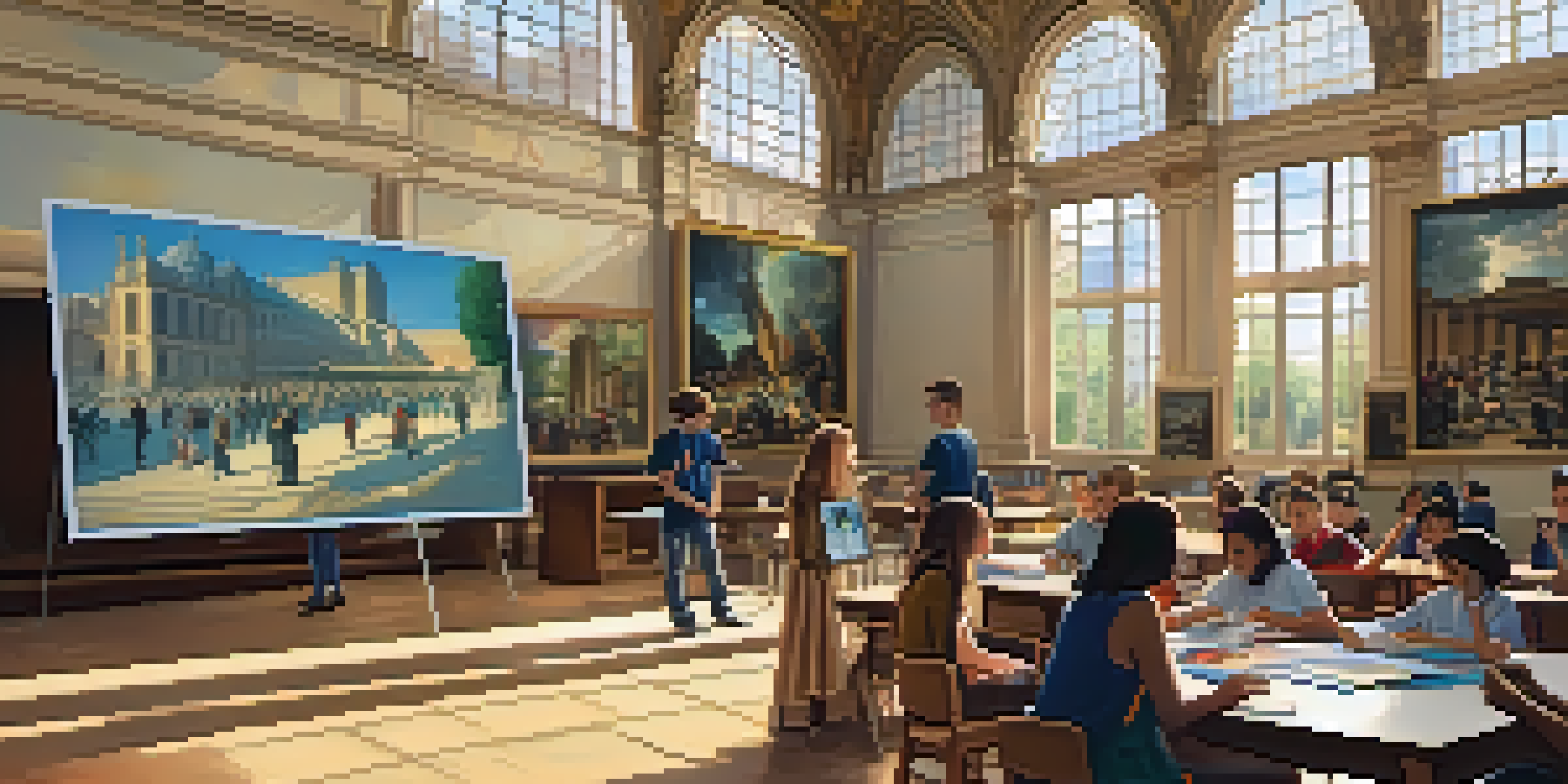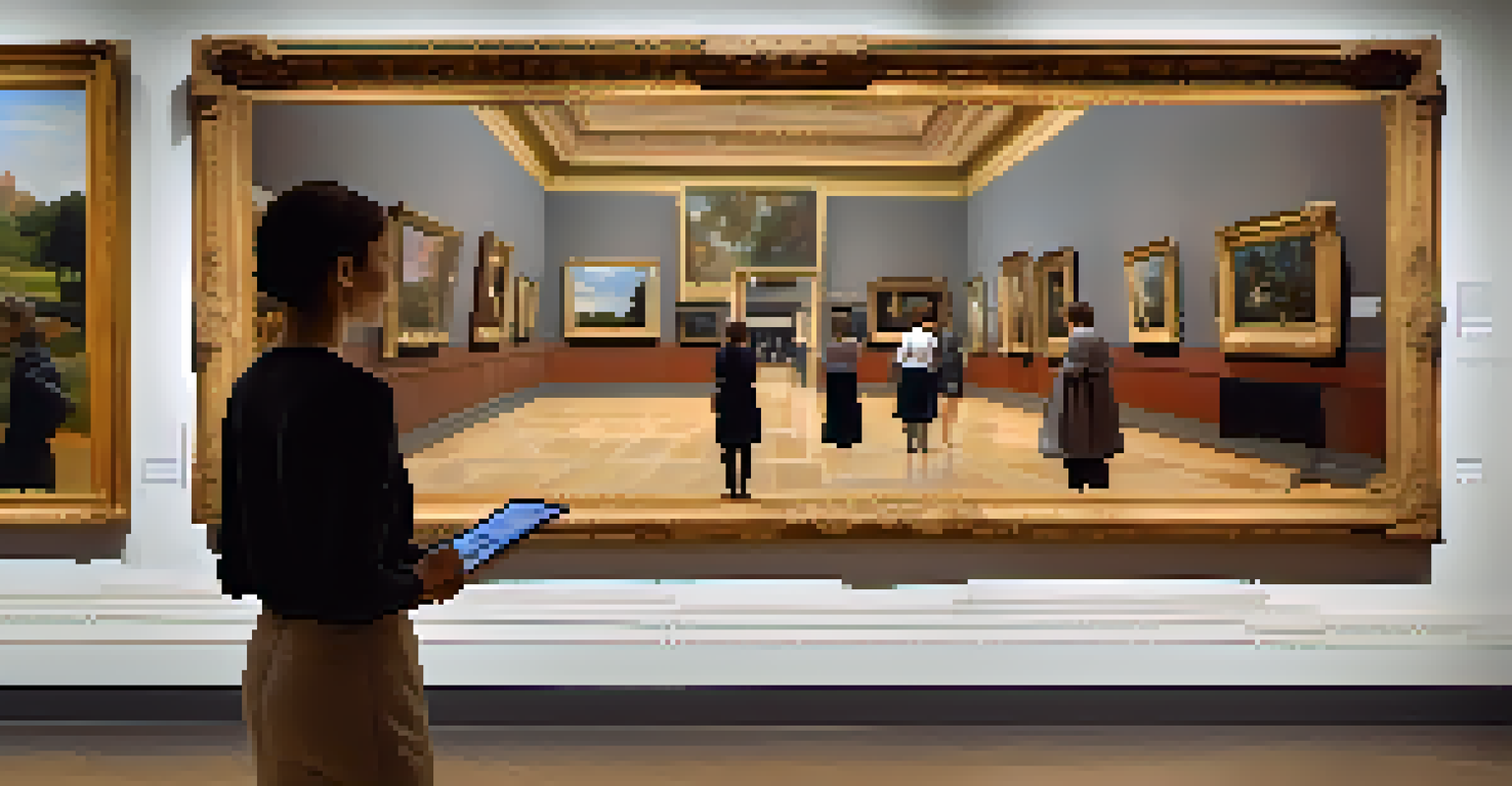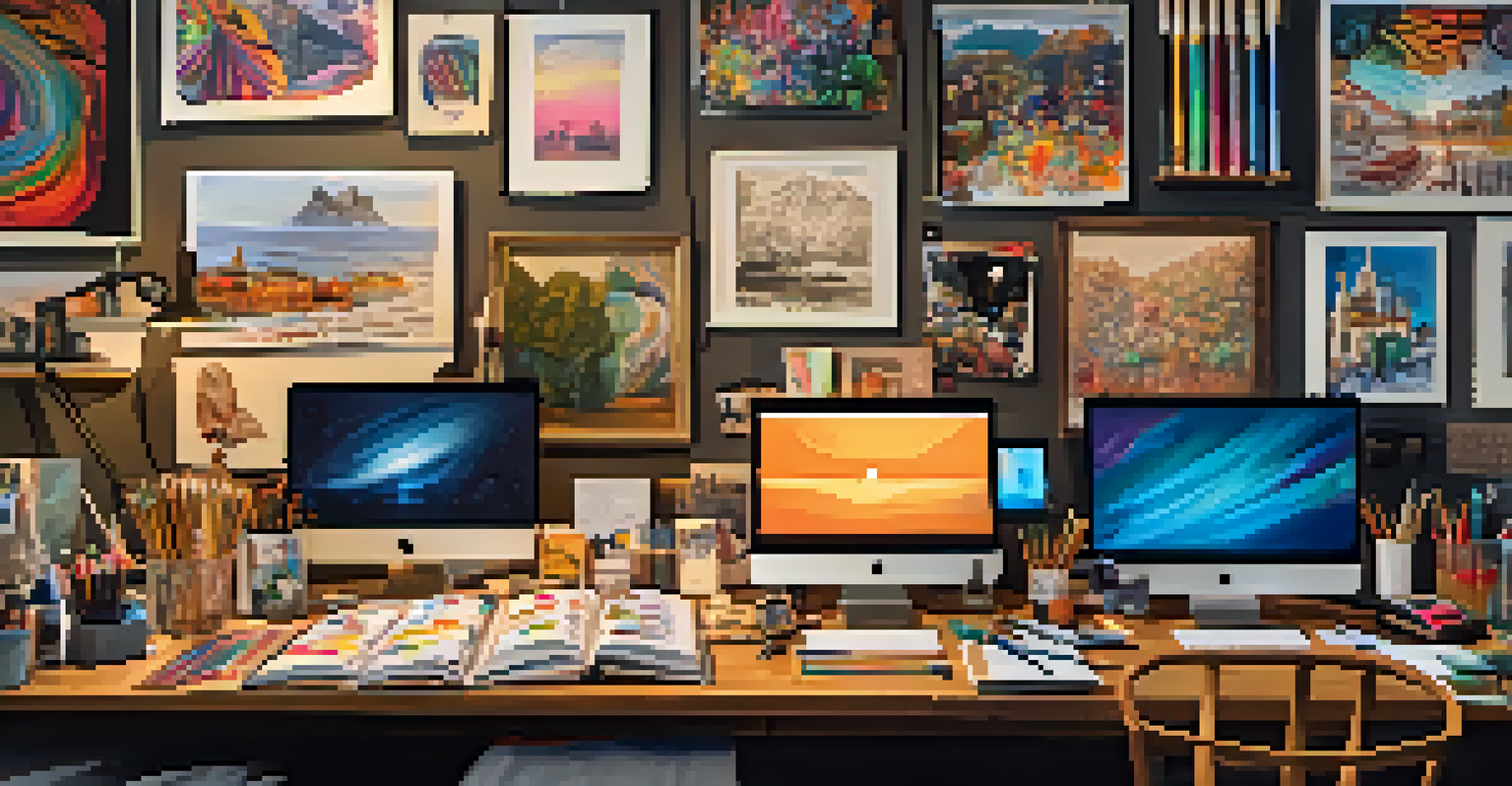Utilizing Digital Media for Art History Education

The Rise of Digital Media in Education
In recent years, digital media has transformed various educational fields, including art history. Online platforms have made it easier for educators and students to access a wealth of resources at their fingertips. With this shift, the traditional classroom experience is evolving, allowing for more interactive and engaging learning environments.
Education is the most powerful weapon which you can use to change the world.
Utilizing digital media, educators can share high-quality images, videos, and virtual tours of famous artworks and museums. This not only enriches the content but also caters to different learning styles, making art history more accessible to a diverse audience. For instance, a student can now view a detailed video analysis of Van Gogh's techniques, which would have been challenging in a standard textbook format.
Moreover, digital media encourages collaboration among students and educators, breaking geographical barriers. Students from different parts of the world can come together in virtual discussions, sharing perspectives and insights that enhance their understanding of art history.
Interactive Learning Through Virtual Tours
Virtual tours have become a game-changer in art history education, providing students with immersive experiences. Institutions like the Louvre and the British Museum offer online explorations, allowing learners to navigate through famous exhibitions from their homes. This kind of engagement makes art history feel alive and relevant.

These virtual experiences can spark curiosity and motivate students to delve deeper into specific artists or movements. For example, a student intrigued by Impressionism can explore Monet's works up close, leading to further research and discussions. This hands-on approach enhances retention and understanding of the subject matter.
Digital Media Transforms Education
Digital media enhances access to art history resources, creating interactive and engaging learning environments.
Additionally, virtual tours often incorporate interactive elements such as quizzes and guided commentary, fostering a more engaging learning atmosphere. Students can immediately apply their knowledge, making the learning process much more dynamic and enjoyable.
Utilizing Social Media for Art Engagement
Social media platforms like Instagram and Pinterest have become vital tools for art history education. Educators can curate and share stunning visuals of artworks, enabling students to explore different styles and periods through captivating imagery. This visual storytelling can ignite interest and passion for the subject.
Technology is best when it brings people together.
Furthermore, social media encourages students to engage actively with art. For instance, they can participate in art challenges, share their interpretations, or even create their own art inspired by historical movements. This not only builds community but also fosters creativity and personal expression.
Moreover, using hashtags and online discussions can help students connect with a broader audience, including artists and historians. This expanded network allows learners to gain diverse perspectives and insights, enriching their understanding of art history.
Access to Online Resources and Archives
The internet offers an abundance of online resources, including digital archives of artworks and scholarly articles. Websites like Google Arts & Culture provide access to millions of high-resolution images and detailed information about various art pieces. This vast repository is a treasure trove for students and educators alike.
By tapping into these resources, students can conduct in-depth research on artists, movements, and techniques without geographical limitations. This democratization of knowledge allows anyone with an internet connection to learn and appreciate art history.
Interactive Learning with Virtual Tours
Virtual tours provide immersive experiences that spark curiosity and deepen understanding of art movements.
Additionally, many universities and institutions are digitizing their collections, making rare works accessible to the public. This shift not only enhances educational opportunities but also preserves cultural heritage for future generations.
Creating Multimedia Presentations
Multimedia presentations are an effective way to teach art history while engaging students creatively. By combining text, images, videos, and audio, educators can create dynamic lessons that capture students' attention. This approach caters to various learning preferences and makes complex concepts easier to digest.
For instance, a presentation on Renaissance art could include a video explaining the historical context, alongside images of significant works. This layered information helps students connect the dots and understand the broader narrative of art history.
Additionally, students can develop their own multimedia projects, encouraging them to explore topics that interest them. This hands-on experience not only reinforces their learning but also allows them to express their understanding in unique ways.
Fostering Discussion Through Online Forums
Online forums and discussion boards provide a platform for students to engage in thoughtful conversations about art history. These spaces encourage learners to share their insights, ask questions, and debate various interpretations. Such discussions can deepen understanding and foster critical thinking skills.
For example, a forum centered around a particular art movement or artist allows students to explore different viewpoints and analyses. This collaborative environment promotes active learning, as students can learn from each other’s perspectives and experiences.
Social Media Fosters Art Engagement
Social media platforms encourage active participation and collaboration among students, enhancing their appreciation for art.
Moreover, these forums can connect students with experts in the field, offering unique opportunities for mentorship and guidance. Engaging with professionals can inspire students and provide them with valuable insights into the art world.
The Role of Gamification in Learning
Gamification is an innovative approach to education that incorporates game-like elements into learning experiences. In art history, educators can create interactive quizzes, scavenger hunts, and simulations that make learning fun and engaging. This strategy not only motivates students but also reinforces their knowledge through play.
For instance, a quiz game could test students on famous artworks, encouraging friendly competition while solidifying their understanding of key concepts. By turning learning into a game, students may feel more inclined to participate and retain information.

Additionally, gamification can help develop critical skills such as teamwork and problem-solving. By collaborating on projects or competing in challenges, students can build essential skills that extend beyond art history.
Conclusion: Embracing the Future of Art Education
As we embrace the digital age, it’s clear that digital media offers exciting opportunities for art history education. By leveraging various online tools and resources, educators can create an enriched learning environment that engages students on multiple levels. The integration of technology not only enhances the educational experience but also prepares students for a world where digital literacy is key.
The possibilities are vast, from virtual tours to social media engagement, and it’s essential for educators to explore these avenues. By doing so, they can foster a love for art history that resonates with students, inspiring the next generation of artists, historians, and enthusiasts.
Ultimately, the goal is to make art history accessible, engaging, and relevant. By utilizing digital media, we can ensure that this rich field of study continues to thrive and evolve.